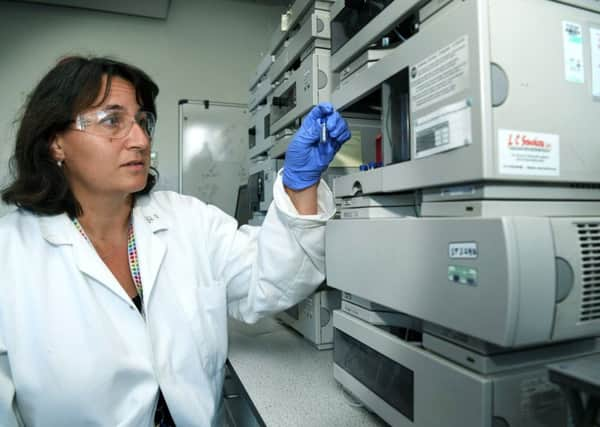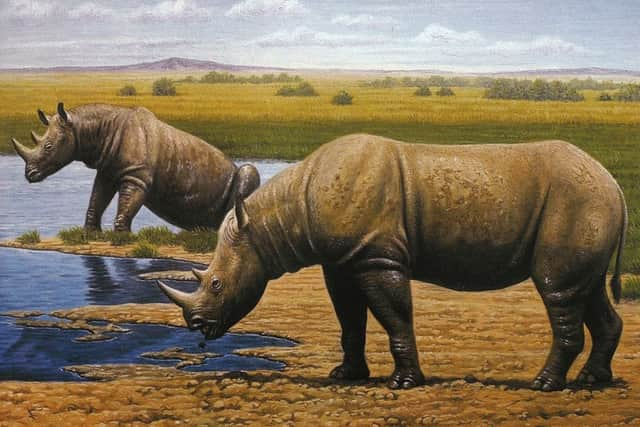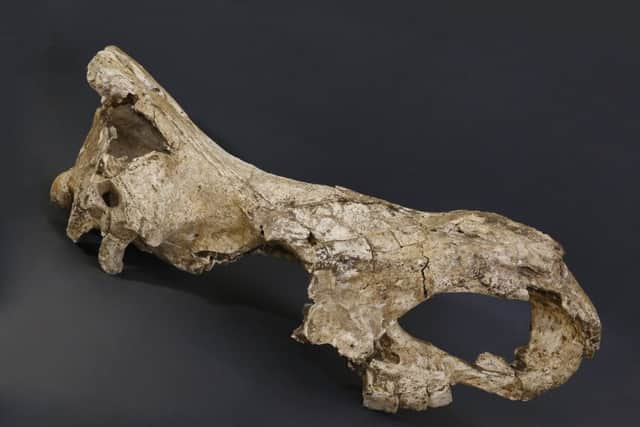The tooth is out there – key to evolution is on the tip of our tongue, York scientists discover


From within the tooth enamel of a rhino that had lived in prehistoric eastern Europe, researchers from Yorkshire have managed to extract the most complete set yet recorded of genetic data more than 1m years old.
Its release to the scientific community set off a race to complete the jigsaw that Charles Darwin had started to piece together in 1859.
Advertisement
Hide AdAdvertisement
Hide AdThe technique of separating original proteins from other chemicals contained within the dental enamel was said to hold out the possibility of solving some of the biggest mysteries of animal and human development.


It was devised by two scientists at the University of York, who spoke of “a number of small Eureka moments” as their theories were borne out.
“It’s a method that goes back much further in time than DNA,” said Dr Kirsty Penkman, in the university’s department of chemistry.
She and her colleague, Dr Marc Dickinson, had discovered that tooth enamel “seems to protect its protein almost like a little time capsule”, Dr Penkman said.
Advertisement
Hide AdAdvertisement
Hide Ad“It’s a step forward from Darwin. He was making his predictions based on the shape of bones – we’re now able to get molecular information from the bone and the teeth.


“The potential for this to be applied to a huge range of different species, including humans, is enormous. This is the first step towards that.”
The technique is an advancement on DNA research, which, said Dr Penkman, is volatile and “can only go back so far”.
In contrast, the rhino teeth, dated to 1.7m years ago, had given up their secret despite having been preserved alongside other fossils and not in an icecap.
Advertisement
Hide AdAdvertisement
Hide Ad“It really opens up a window for doing these types of analyses on fossil teeth across the world,” she said.
“There are tons of these fossils sitting around in museums and in sediments around the world, and we can now get useful evolutionary information from them. That’s really exciting.”
She and Dr Dickinson worked on the research with Prof Enrico Cappellini, a specialist in palaeoproteomics at the University of Copenhagen, and a former fellow at York.
He said: “Dental enamel is extremely abundant and it is incredibly durable, which is why a high proportion of fossil records are teeth.”
Advertisement
Hide AdAdvertisement
Hide Ad“This new analysis of ancient proteins from dental enamel will start an exciting new chapter in the study of molecular evolution.”
The difficulties faced by the York team lay in separating the useful information contained within the dental remains from their much greater quantities of calcium phosphate – which, said Dr Penkman, “is really horrible to deal with in the lab.”
She added: “We needed to be sure that the data really was from 1.7m year-old protein and not just from some dirt that was sitting next to it.
“We had to look at the animal remains first, before starting to work on actual human remains. But the fact that we’ve got decent protein out of the animals is a good sign that the technique could ultimately be used for looking at human evolution.”
Advertisement
Hide AdAdvertisement
Hide AdDr Dickinson said: “It was exciting to see such clear evidence from our data that the proteins within the tooth enamel were original, which enables the genetic data derived from them to be used with confidence.”
The rhino teeth used in the York tests came from an archaeological site in Georgia, which also has the oldest human fossils outside Africa.
The science established that the creature was a sibling to the better-known woolly rhino, and not a direct descendent.
But officials had to be persuaded to surrender the ancient materials to a process that would cause microscopic damage to them.
Advertisement
Hide AdAdvertisement
Hide Ad“You have to make a good case that the research you’re going to get out of it will be worth damaging precious fossils,” Dr Penkman said.
“We often wondered whenever we looked at data that the whole theory was going to fall apart. Each time it didn’t, there was a little Eureka moment.”